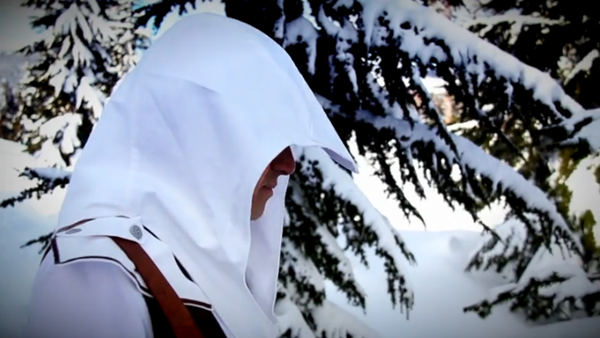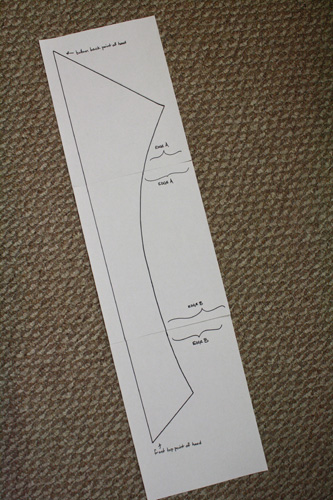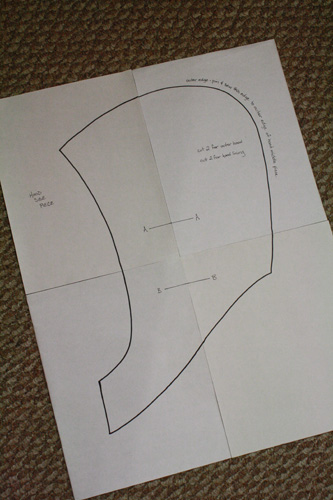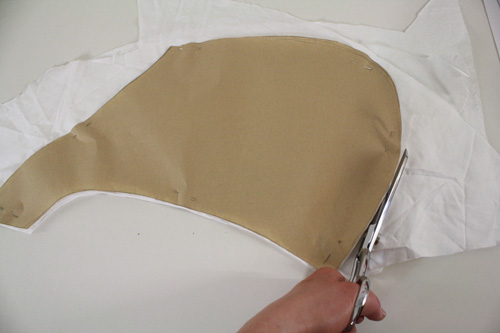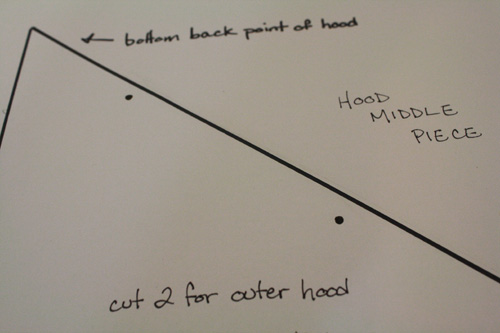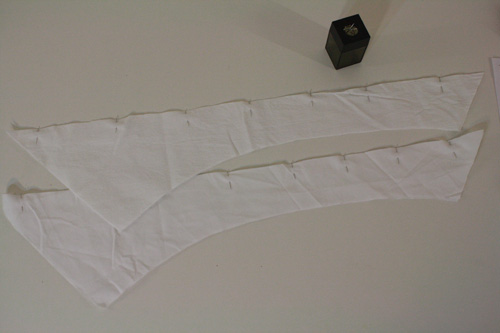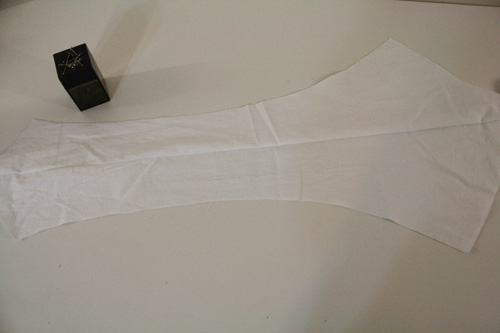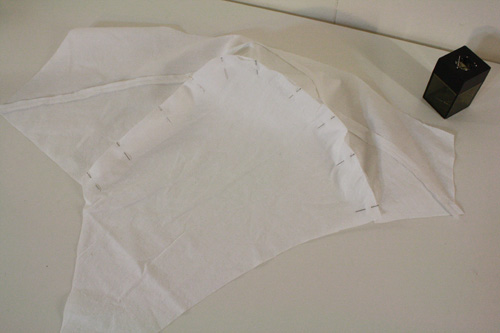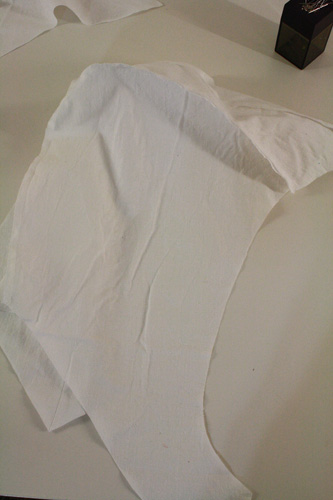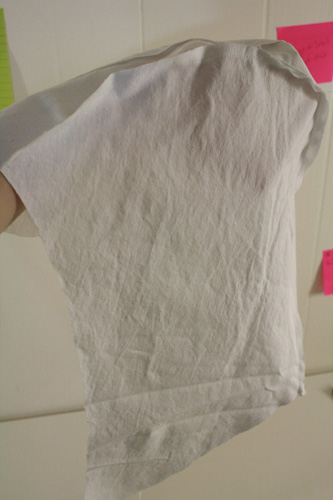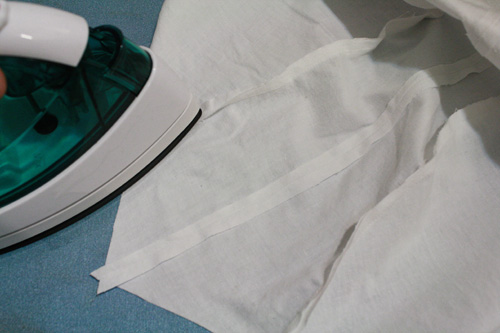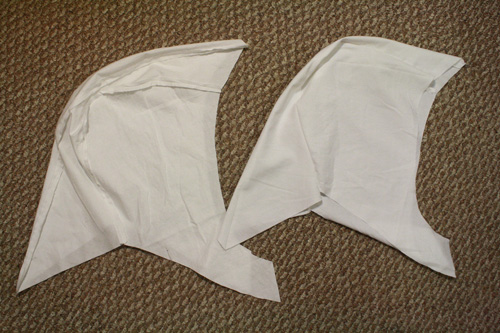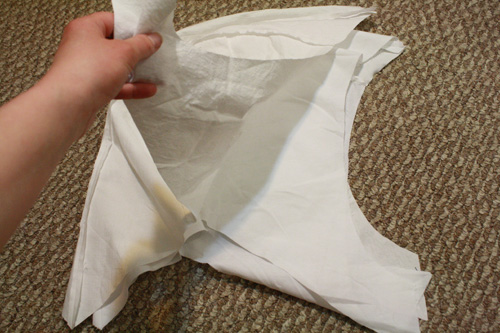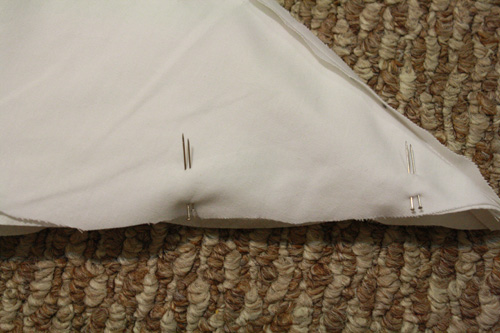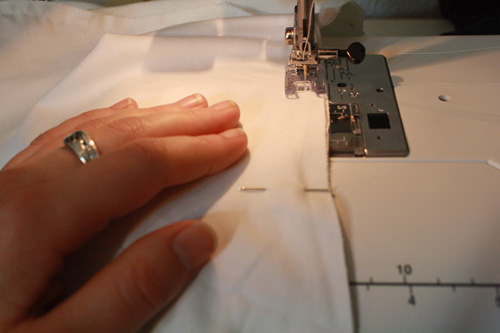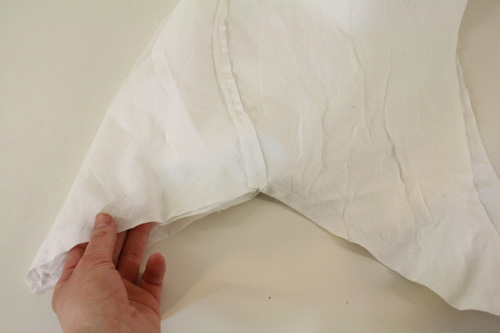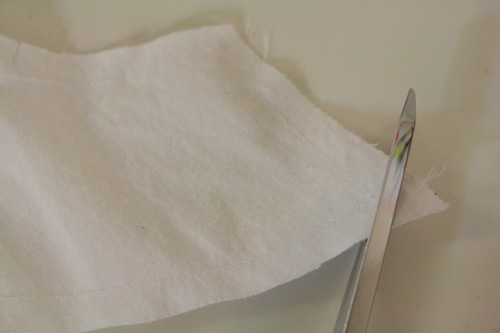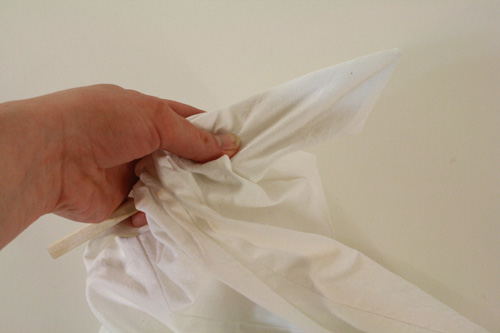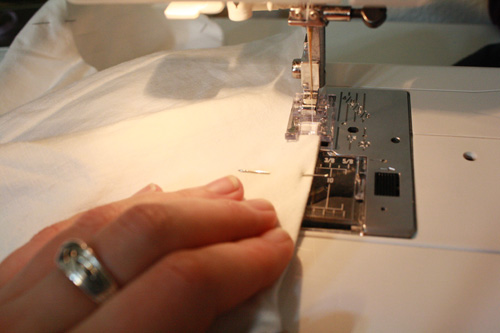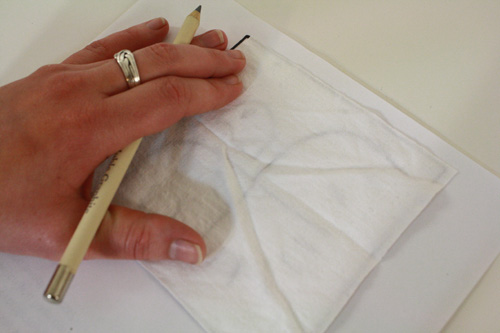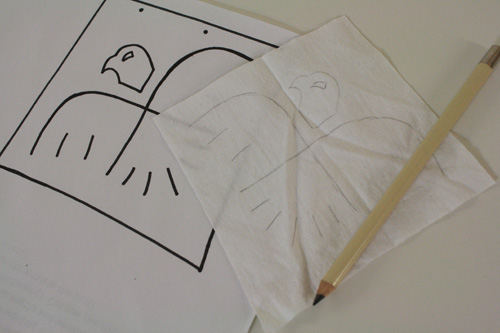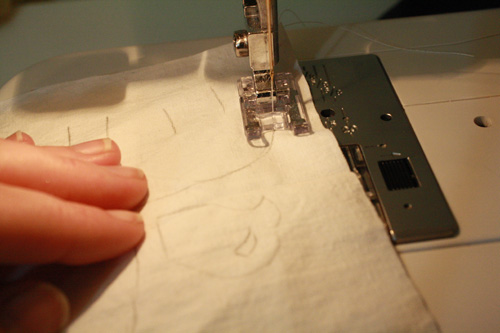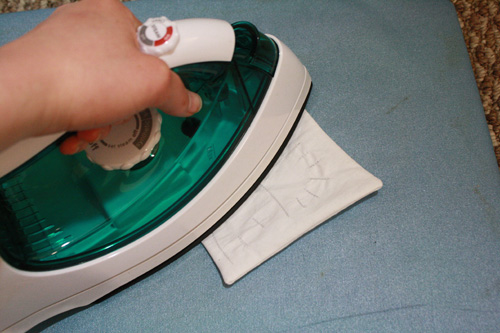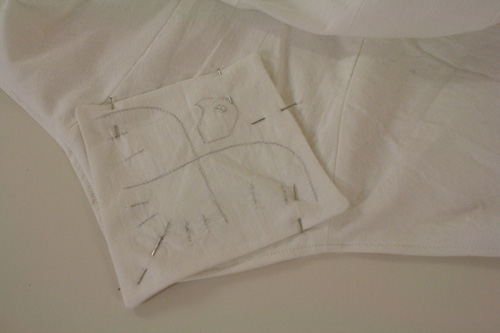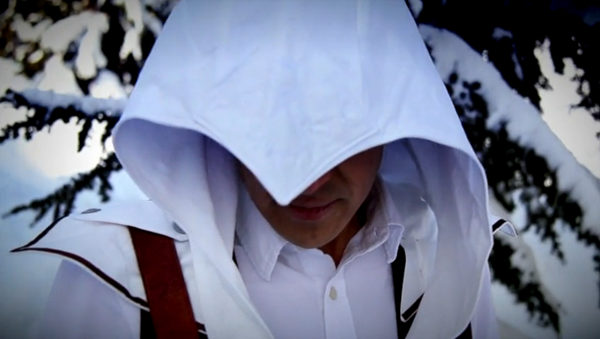Remember several weeks ago when I posted about making an Assassin’s Creed 3 costume piece for a LoadingReadyRun video? The post where I was like, “this turned out so well, it totally wasn’t even that tricky to do, isn’t it awesome” and then didn’t include a tutorial. Cuz I’m a jerk. Well this week I’ve got the full tutorial and pattern for you, so you can just feel bad about calling me a jerk now. Even though I’m the one that did that. Huh, I kinda feel bad. I think this is working.
All the Assassin’s Creed hoods (the ones from the core games anyway – I haven’t looked carefully at the others) are the same essential shape, but they’re all constructed differently. Probably a deliberate choice on the game designer’s part just to make cosplayers’ lives that little bit more challenging. Thanks so much, guys. I haven’t actually tried create any of the other hoods, but from the images I looked at this is probably the easiest hood to put together in terms of construction and not having weird bunching/gathering issues. I hate bunching/gathering issues.
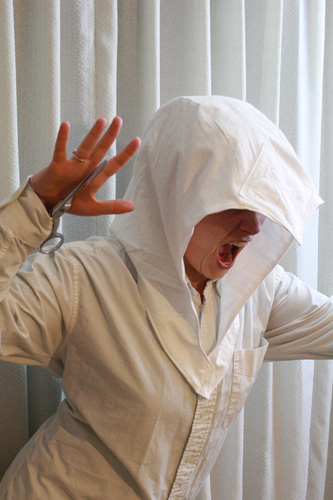
Don't screw with me. I will come for you with my expensive knife-edged sewing shears.
You can read more about the original reason for this project here, and the see the LoadingReadyRun video for which I made the original hood here. And see our friend Cam looking waaaay more badass in it than I do. Although I bet I could do some serious damage with those very expensive, very sharp sewing shears you see stuffed down my sleeve. I’m small, but I’m fierce. And I carry scissors. Which are possibly even more important than a towel.
——————————————
What you’ll need
materials:
- white, non-stretch fabric, about 1 1/2 to 2 yards (Honestly, I have to guess at how much I used, because I just took as much fabric as I need from two white sheets – one sheet (the thicker one) served as the hood’s exterior, and the other as the lining. I definitely recommend using cotton though, especially if you are actually going to cosplay with this, or wear it for any length of time. At any convention or sweaty costume party, you will be so much happier if your costume is made of fabrics that can actually breathe. The people standing near you will probably be a lot happier, too.)
- white thread
- two medium sized snap fasteners OR about 1 1/2 inches of white velcro
- sewing machine
- sewing scissors
- straight pins
- chopstick
- sewing needle
- iron & ironing board
- pencil (a fabric pencil is best, if you have one – if not just use a normal pencil)
- scotch tape
- Assassin’s Creed 3 hood pattern – number 13. under “Sewing Patterns” (be sure to get Parts 1 AND 2!)
——————————————
Putting it all together
1) Start by printing out the pattern (both parts!) Part 1 and part 2 are each four pages, and will need to be taped together. On part 1, match up the 4 pieces of paper using the A—A and B—B lines to show you which edges connect to which other edges. Or just, y’know, look at the pieces and figure it out. On part 2, just use the first 3 pages, matching them up edge A to edge A and edge B to edge B. Set aside the fourth page (with the diamond and the eagle) for now.
Tape the appropriate papers together. Do not worry about margins and stuff, even if your printer (and it will) cuts off the printing on the edges of the paper so the lines don’t go all the way to the edge. Just match up the pieces of paper and all will be well.
Then cut out the pattern pieces from each set of taped-together papers. Where there are gaps in the lines because of printing margins, just follow the obvious place where the line should be till you get to the end of the gap and the continuation of the printed line. That was confusing as all hell. I trust that you can figure this out though – it’s just common sense, really.
2) Now you will pin your pattern pieces (which the ones in the picture look nothing like because they are the original drafts on butcher paper, rather than printed and taped-together patterns) to your fabric. Stack your fabric so you have FOUR layers of fabric in total: two layers of the lining fabric, and two layers of the outer hood fabric. If you’re using the same fabric for the lining and the outer hood*, just make sure you have four layers of that fabric. All flat, one on top of the other.
If your fabric is all wrinkled (like mine was), you should iron it first (like I didn’t – learn from my foolish mistakes).
Do this with the Hood Side piece and the Hood Middle piece.
*I fully recommend this – there’s no big reason not to use the same fabric for both. I just didn’t have quite enough left of either of my white sheets to do this with, so the remainder of one sheet became the lining, and the remainder of the other sheet (which was a nicer quality cloth) became the hood’s exterior.
3) You should now have four copies of the Hood Side piece (two for the lining, two for the exterior) and four copies of the Hood Middle piece (two for the lining, two for the exterior).

3b) See on the Hood Middle Piece pattern how there are two little dots along the pattern edge at one end? Make two little pencil marks at that same place on one of the Hood Middle pieces. Doesn’t matter which of the four pieces, just choose one.
Then set aside the Hood Side pieces for now, and match two of your Hood Middle pieces together. Pin them along their straight edge. Do the same thing with the other two Hood Middle pieces.
4) Sew along these edges, using a 3/8 inch seam allowance (in other words, just keep the edge of the fabric matched up with the edge of the presserfoot while sewing).
You should now have two pieces that look like this:
5) Open up each piece and press the middle seam flat.
6) Now, pair each sewn-together Hood Middle piece up with two of the Hood Side pieces. If you’re using different fabrics for the lining and the exterior, make sure the exterior fabric Hood Side pieces are paired with the exterior fabric Middle piece, and same with the lining.
Pin the curved edge of one Hood Side piece to the curved, outside edge of the Middle piece, making sure that their right sides are facing each other (so the seam of the Middle piece should be facing out towards you). Important note: the wider end of the Middle piece is the bottom and back of the hood.
7) Now stitch those pieces together along the pinned edge, again with a 3/8 seam allowance.
8) Pin the other Hood Side piece to the other side of the Middle piece, and sew them together. You will now have the basic hood, looking about the right shape and everything.
Give those new seams a bit of a pressing, at least at the ends – it gets a bit tricky to iron them down all the way along the middle of the hood, because the shape is so rounded.
9) Repeat steps 6-8 with the other Hood Side and Hood Middle pieces. You should now have two identical (except maybe for the fabric) hood shapes.
10) Leave one of the hoods inside out (seams showing), and turn the other hood right side out. Tuck the right side out hood into the inside out hood, so that the right sides of the two hoods are together.
11) Match the hoods up at the front and back points and all the seams, pinning them there. Then pin the hoods together all the way around.
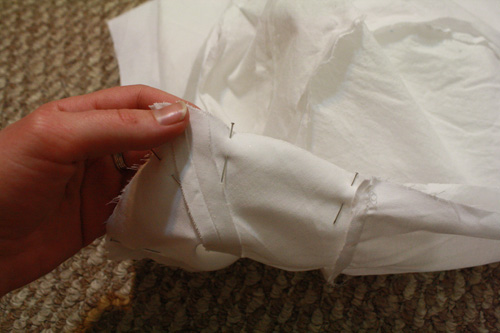
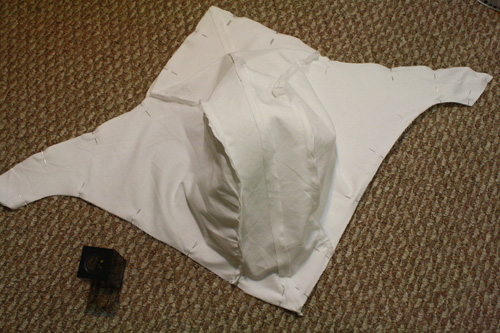
EXCEPT, remember those little pencil marks you made along the edge of one of the Hood Middle pieces? Find those, and put two pins in the fabric right next to each other at those marks. You’re going to leave the space between those double pins open and unsewn, so that you can turn the whole hood right side out.
12) Start at one of the double pin marks, and sew all the way around the hood till you get to the other double pin mark. Us a 3/8 inch seam allowance as before.
13) [Optional but helpful] Use the very tips of your scissors to cut a series of small lines from the edge of the fabric up to (but not through!) the seam line in those parts of the hood where the line curves significantly. Also, snip the pointy ends off all the corners (again being sure not to cut through the thread).
14) Using that gap you left between the layers, turn the whole thing right side out.
15) Push the lining layer of fabric inside the exterior, so the whole thing looks like a hood and not an empty balloon.
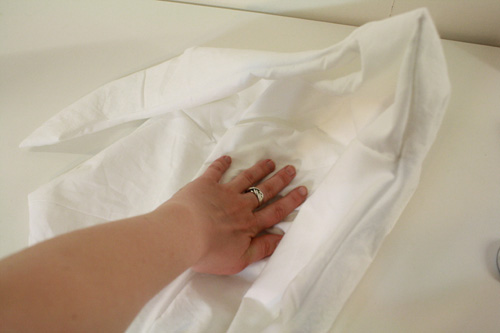
16) Use the pointy end of a chopstick inserted through the gap between layers to (gently!) push out all the corners. Then, at the edges of the hood, pull and roll the fabric a bit between your fingers, till both layers are pulled out right to the point where they’re stitched together. Did that make any sense at all? Basically, you want a totally smooth edge, and you don’t want a bunch of fabric still tucked up inside the hood. Pin along the edge as you go. When you get to the gap, just make sure the raw edges are tucked inside and evenly matched up, and pin the gap closed.
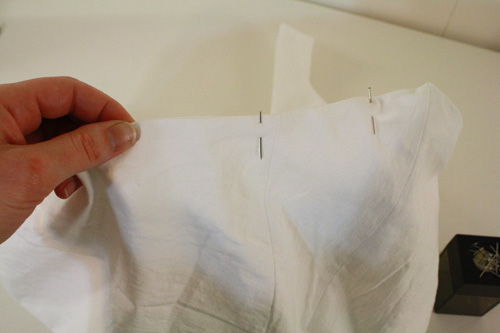
17) Sew along the entire edge of the hood, stitching the gap closed and keeping the edges of the hood in place. This time, use about a 1/8 inch seam allowance. See the open space in the middle of your presserfoot? What I do is just match the edge of the fabric up with the edge of that space, and that’s about the right seam allowance.
18) Excellent, the main part of the hood is done! Now to add that eagle-embossed triangle at the front. Grab page 4 from part 2 of the pattern. Cut out the diamond shape, pin it to a double layer of fabric, and cut it out, so you have two of those diamond-shaped pieces of fabric. Again, maybe iron your fabric first. I really really should have. It’s easier to work with, especially if you’re drawing eagles onto it. Make two little pencil marks on one of the fabric diamonds, in the same place you see those two little dots along the edge of the pattern piece.
19) To add the detail of the eagle (which is not strictly necessary, but is a nice bit of attention to detail), place one of the fabric diamonds back overtop of the pattern piece. Then, using a pencil (a special fabric pencil is ideal, since its marks will thoroughly disappear in the wash), trace over the lines of the eagle. If you’re having trouble seeing those lines, pin the fabric to the pattern and hold it up against a window to do the tracing.
20) Now (and this is the somewhat tedious part), stitch over each of those lines. You probably want to go over each line two or three times. To get it to show up a little more, maybe use off-white thread, or put gray thread in just your bobbin, or use white and gray as your top threads (on most sewing machines, you can use two top threads at a time – just load them one beside the other onto the thread holder thingy and thread both of them through the machine together). Or, if you want to skip the finicky stitching, you could use a small paintbrush and some off white fabric paint to add this detail. Puff paint would probably work. It’s supposed to be pretty subtle, and ideally won’t show up a ton.
21) Now place your eagle-embellished diamond on top of the other diamond and pin them together, right sides facing each other. Put a double pin at each of the little pencil marks you made along the edge of one of the diamonds, and do not sew that bit together.
Note: I actually decided to let the pencil-lined side of my eagle be the “right” side, that would be seen on the finished hood. The pencil lines, mostly covered by the thread, made the eagle show up a little more – though they will probably come out entirely in the wash – and even when one is careful, the upward-facing side of anything being sewn with a machine tends to be at least a little tidier than the reverse side.
22) Starting at one double pin spot, sew around the diamond till you get to the other double pin spot (1/8 inch seam allowance here). You should then have a piece like this, with a little gap in one side:
23) Use the gap to turn the piece right side out, poke the corners out gently with a chopstick, and do that thing with the edges to get them all nice and flat and pulled out. Tuck the raw edges in at the gap, and pin the gap closed. Then give the piece a quick ironing.

24) Pin the diamond to the front of the hood piece, making sure it is centered. Let the very bottom tip of the diamond overhang the actual hood fabric slightly.
25) Stitch around the edges of the diamond, again with a 1/8 inch seam allowance.
26) Sew some snap fasteners (or a bit of velcro) to the front bottom flaps of the hood to close it. And finally, especially if you used cotton, you probably want to give the whole thing a good ironing.
27) Destroy your enemies! Or just, y’know, pose for badass photos at the next convention you attend.
And on the topic of hoods, if you’re into dressing up as something a little more huggable (or need a really simple, two-piece pattern hood tutorial for some other project), try this post.


